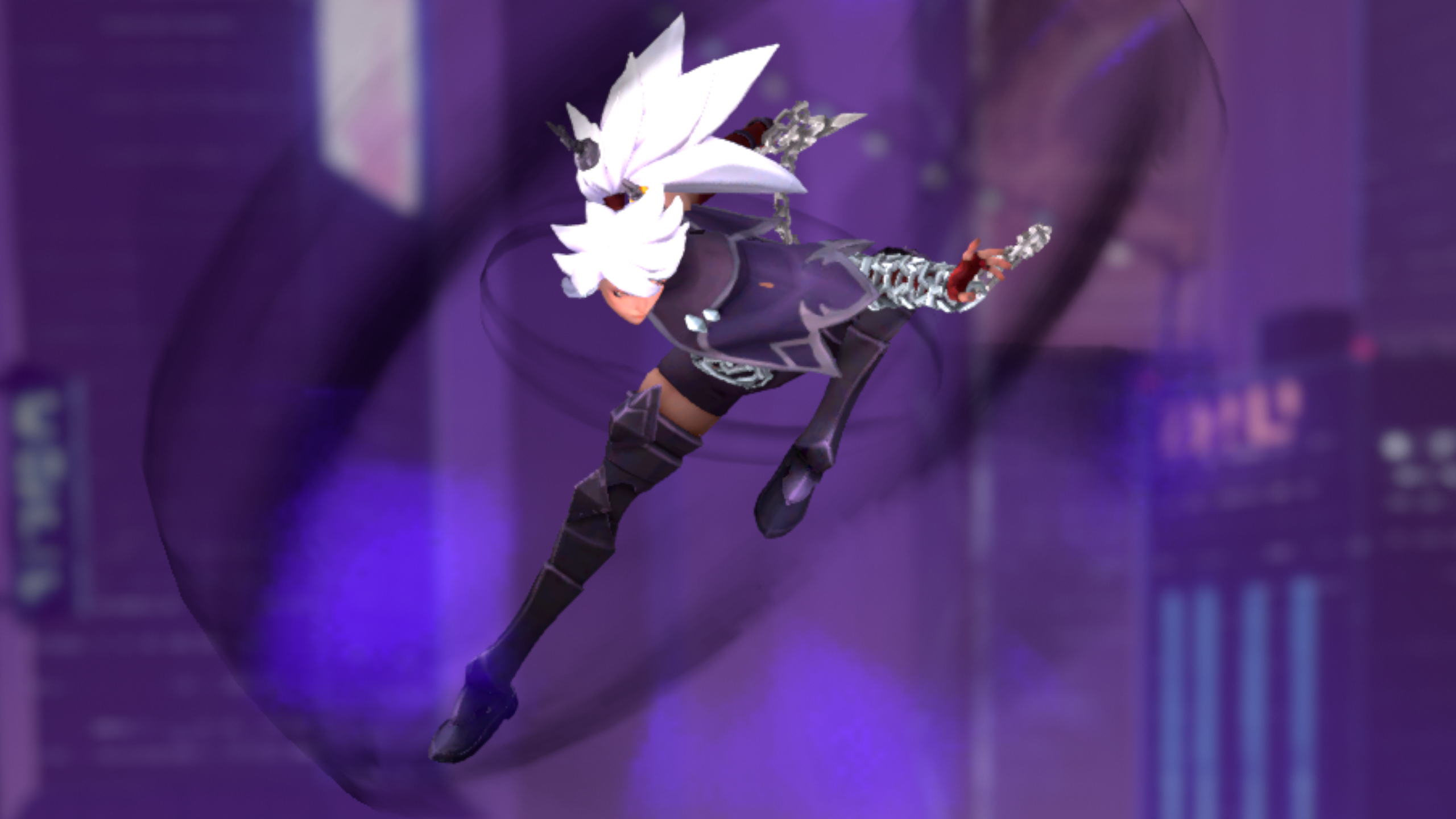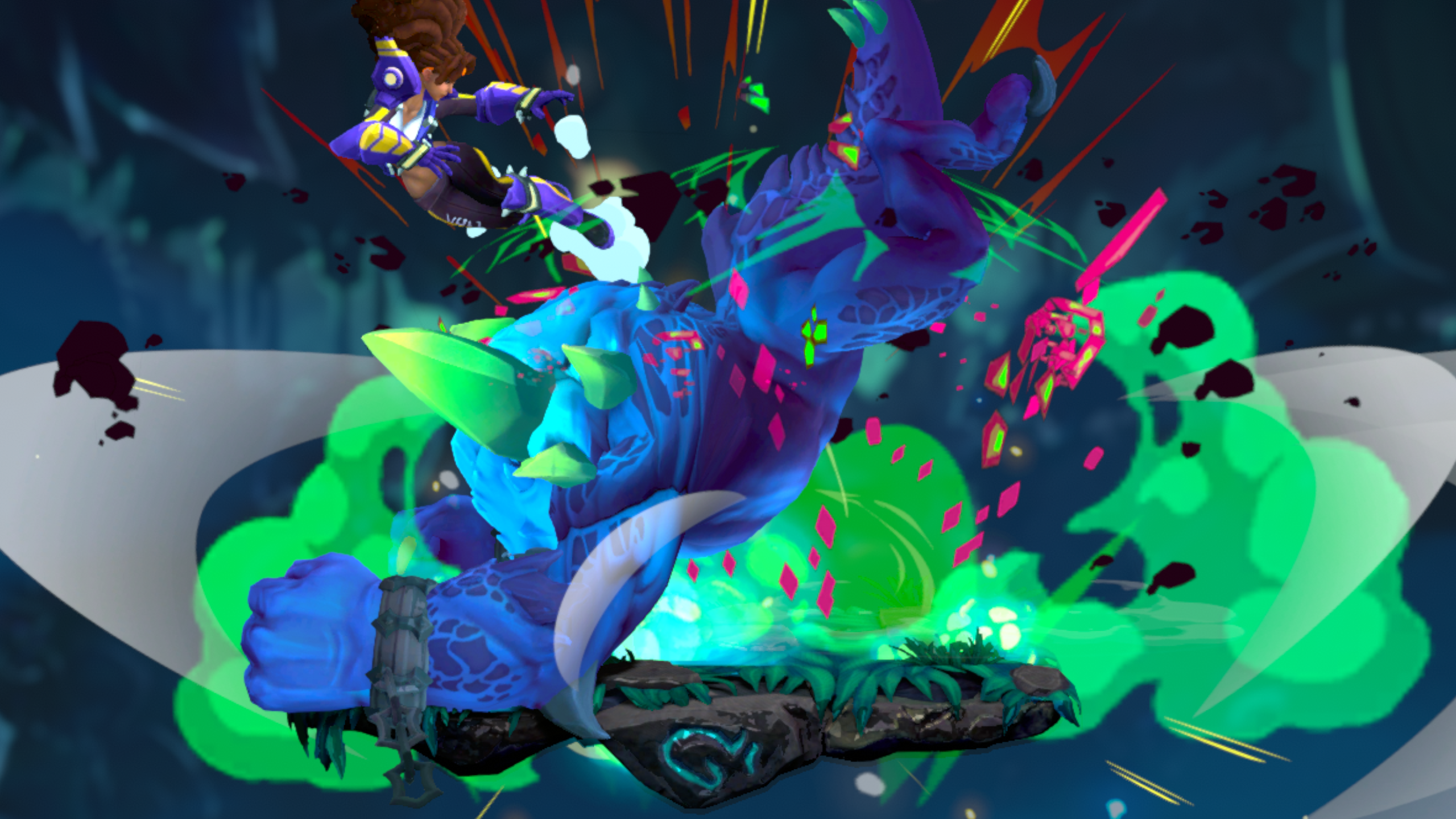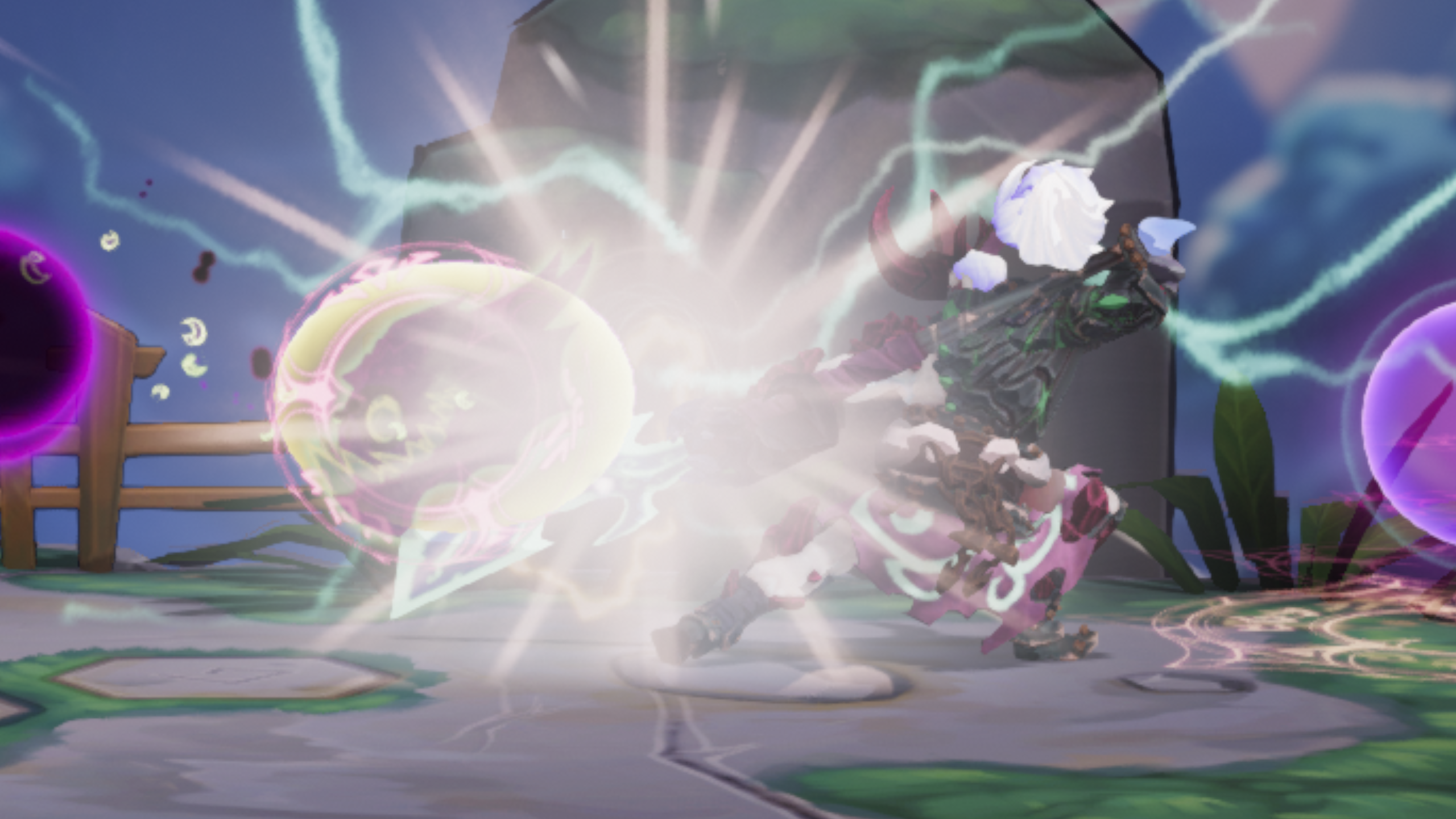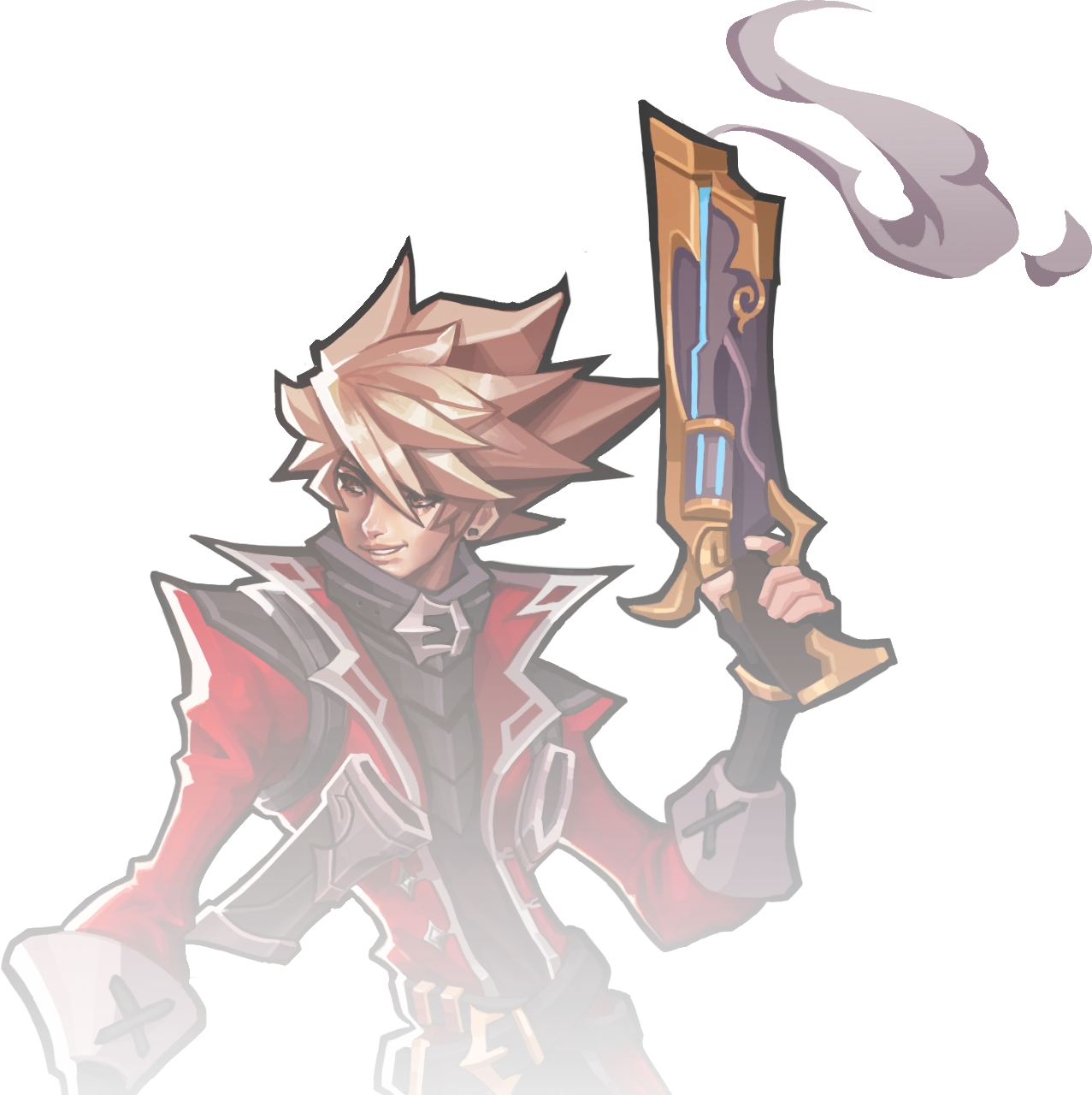Rushdown Revolt
Project Overview
2020-2023
Role: Design Lead
Genre: Platform Fighter
Team Size: 10-50
Rushdown Revolt is a platform fighter (think Super Smash Bros.) with a focus on fast-paced competitive gameplay and exciting combos. I joined the team under the blanket role of "programming and game design" in 2020, and later that year graduated to lead the "development" team, which combined both the game design and engineering departments under one roof.



During my time working on Rushdown Revolt, my primary design focus was improving core combat systems and character movesets. My official title was "Game Design and Programming Lead", but my prior experience as a solo developer allowed me to assist in a broad range of other areas as well.
Some of the tasks I worked on in my time at Rushdown include:
Some of the tasks I worked on in my time at Rushdown include:
- Design and in-engine implementation of new characters
- Updates to Balance & Gameplay Systems
- Collecting, evaluating, and responding to live player feedback
- Stragegic planning and decision-making
-
Spot work in many other areas:
- VFX, animation, and sound design
- UI implementation
- Networking and analytics
- Event staffing
- And much more

Rushdown Revolt began its life as a reboot of a failed game called Icons: Combat Arena. The company had acquired all of the assets and IP, but none of the original team who built Icons remained involved in the project.
In a hasty attempt to fix Icons’ design, the early team decided to throw anything they could think of at the wall to see what stuck. Some things did stick, but many things just sort of fell through the cracks, leaving the game with plenty of content that was built without respect for any kind of cohesive set of foundational design principles.
For me as a designer joining the project, this meant quite a bit of work was needed in order to refine the gameplay experience into something solid. Without a clear vision for where "the fun" comes from, and without the open-ended freedom to create a paradigm from scratch, I had to figure it out as I went. The result was a fairly unique process of design "in reverse", identifying which of the disparate pieces that had made their way into the game "worked", what needed to be scrapped, and how to unify it all into something cohesive.
In a hasty attempt to fix Icons’ design, the early team decided to throw anything they could think of at the wall to see what stuck. Some things did stick, but many things just sort of fell through the cracks, leaving the game with plenty of content that was built without respect for any kind of cohesive set of foundational design principles.
For me as a designer joining the project, this meant quite a bit of work was needed in order to refine the gameplay experience into something solid. Without a clear vision for where "the fun" comes from, and without the open-ended freedom to create a paradigm from scratch, I had to figure it out as I went. The result was a fairly unique process of design "in reverse", identifying which of the disparate pieces that had made their way into the game "worked", what needed to be scrapped, and how to unify it all into something cohesive.
The glue that holds RushRev together is a mechanic called Spark Cancelling, which allows players to arbitrarily chain attacks into each other. Because Spark Cancelling is so essential to Rush Rev, it warrants a brief explanation here:
- Whenever a player lands a hit, they gain a "spark".
- Players can spend their spark to cancel any move into a short dash, regardless of any other circumstances.
- That dash can then be cancelled into another attack, which will grant spark if hit, allowing another cancel, and so on as long as the player can keep up the hits.